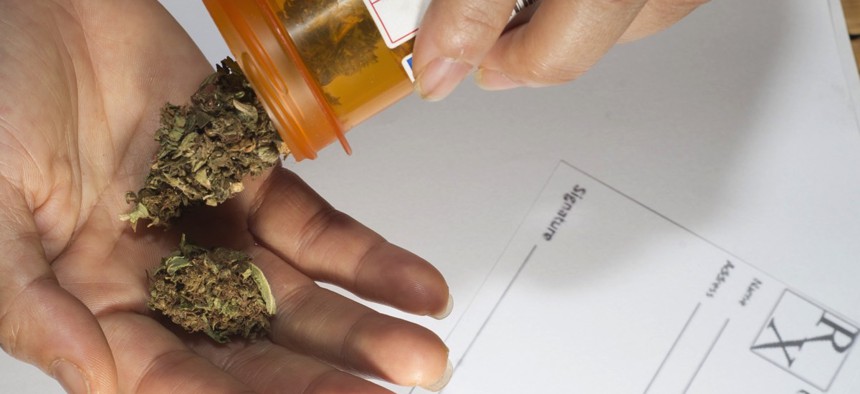Here’s How Hawaii Took Its Medical Marijuana Program Online

William Casey / Shutterstock.com

Connecting state and local government leaders
States are making medical marijuana registries and certification more efficient.
When Hawaii’s government moved the state’s then-13-year-old medical marijuana program from the public safety department to the health department in 2013, it wasn’t looking for a simple update.
Both departments had fundamentally different perspectives on information and data, necessitating an all-new, electronic patient registration system—launched in January—that accepts online applications.
Patients need annual recertification, and the new database allows physicians to enter patient information in the office in lieu of mailing paperwork—around 1,200 applications having already been submitted.
“For years the state had been pushing for change because it wasn’t fair to house the medical marijuana program under a department suppressing the use of marijuana—a program better served hosted by a department connected with the public health side of marijuana,” said Peter Whiticar, Hawaii State Department of Health chair.
“Basically we had 18 months to get up to speed to handle a fully-established program with 13,000 patients and 250 doctors.”
Hawaii isn’t alone.
As more states chasing new revenue streams legalize medical and recreational marijuana, they must decide how to efficiently regulate sales and use.
Maine recently opted to streamline and standardize its certification process to combat instances of fraud the state was seeing, while satisfying its legislative reporting process.
The Maine Information Network, a subsidiary of information service provider NIC, began meeting with the state Department of Health and Human Services in early 2014. The NIC also oversaw the development of Hawaii’s system, in addition to one more in Oregon.
“In the past there were several certification forms around, which made it difficult for dispensaries and law enforcement to identify them,” said Dan Andrews, MIN general manager. “If you wanted yours you actually had to send information to the state, so we’ve removed the department from the middle of the process.”
Starting in January every applicant receives a consistent certification, watermarked on approved papers, after a single trip to the doctor’s office.
Confidentiality and the doctor-patient relationship are both improved that way, Andrews said, and no information is retained that isn’t supposed to be—a chief concern voiced in physician focus groups.
Data collected includes the date of the transaction, physician’s name, whether the patient is under or over 18, and the ZIP code. The information helps with planning because Maine, a dispensary state, wants to know the geographic spread of patients to ensure they’re being served properly and new dispensaries are opened where they’re not.
Hawaii had to handle both its legacy database while capturing new information under updated administrative rules, when creating the new patient registration system.
The public safety department’s concern when running the database was ensuring grow sites were legally established, so the new system provides limited, secure online access for law enforcement while preserving patient privacy.
Police can only see a person’s name, date of birth and registration number to verify they’re a legitimate cardholder in the system at any time.
Electronic signatures weren’t permitted under the old administrative rules, Whiticar said, which prevented a functional online application system.
Midyear changes to registration information can now be made by doctors with ease, and certification turnaround time is altogether quicker.
While Hawaii’s program is not done being refined, Whiticar said, it’s government’s job to clearly define for its programmers what the final product should look like, rather than assuming “the programmer is the solution to all their problems.”
Administrators should look to see what other states are doing on the medical marijuana front, he advised, and data test thoroughly throughout development.
“Finally, physicians and law enforcement need to be walked through the process,” Whiticar said. “They’re the end users who will make or break the system.”

NEXT STORY: Policing as a platform helps Palm Springs slash paperwork





